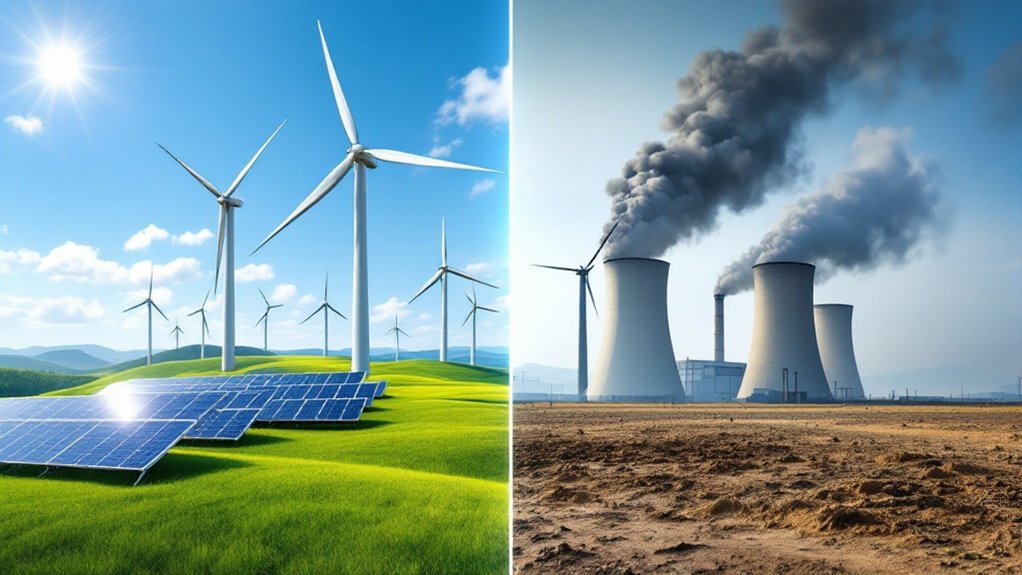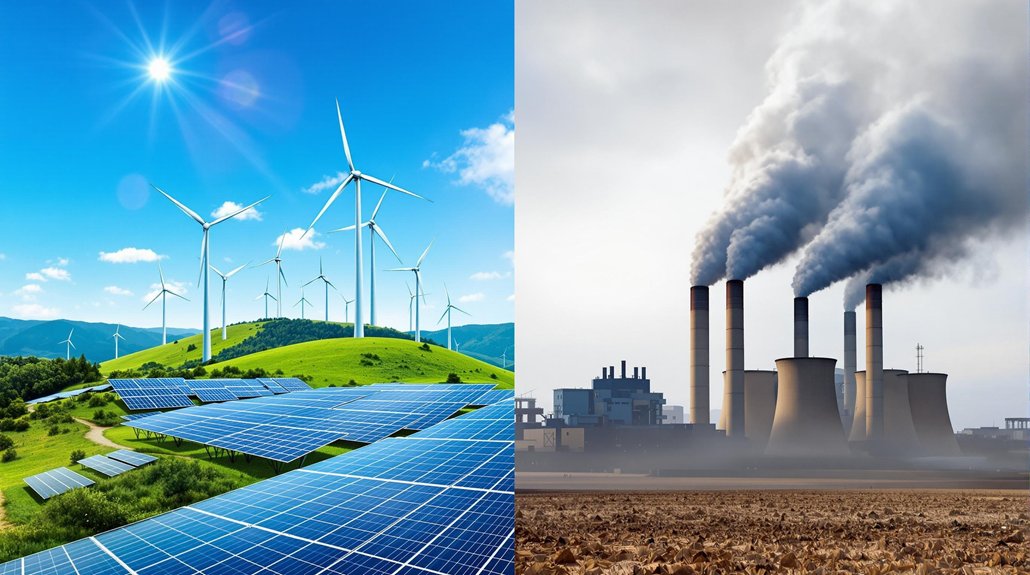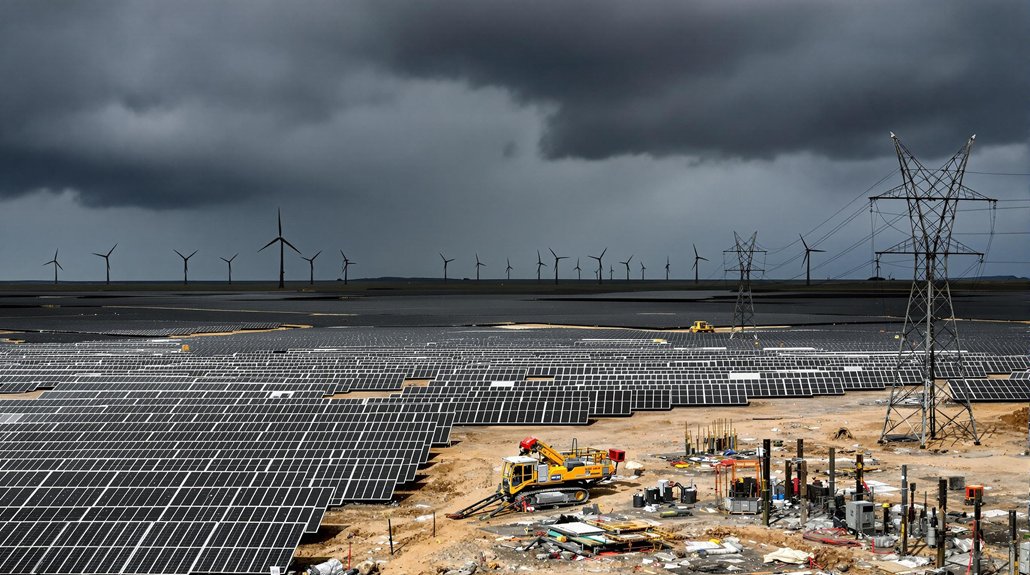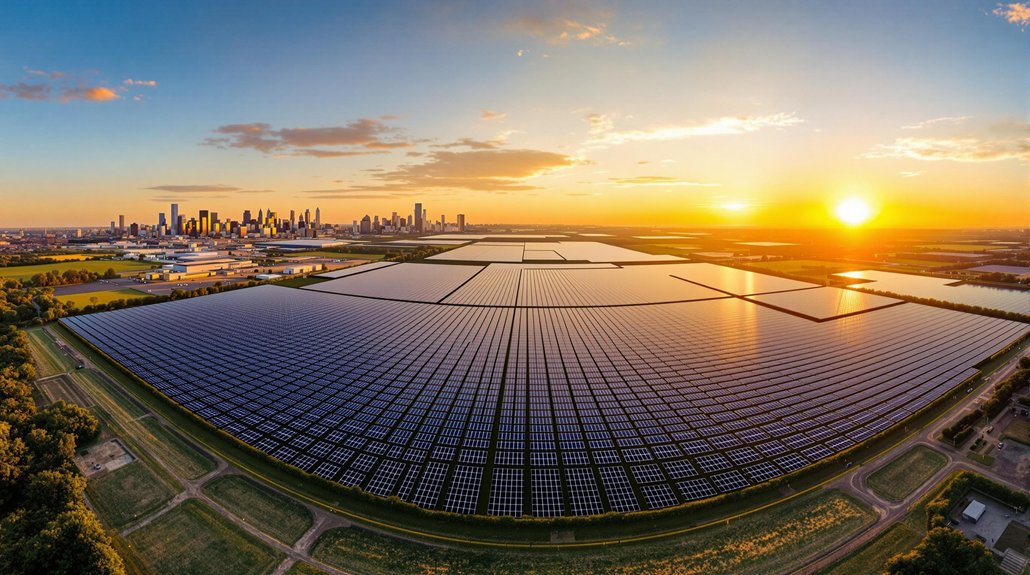Renewable energy sources like solar and wind naturally replenish themselves, while nonrenewable sources like fossil fuels exist in limited quantities and will eventually run out. Renewables produce minimal greenhouse gases compared to fossil fuels, which are major climate change contributors. While renewables often have higher upfront costs, they typically offer lower long-term expenses and create more jobs. Technology advances continue to make clean energy increasingly cost-competitive with traditional energy sources.

As the world grapples with climate change and dwindling fossil fuel reserves, the debate between renewable and nonrenewable energy sources has gained significant attention. Renewable energy comes from natural sources that replenish themselves, including solar, wind, hydropower, and geothermal. Nonrenewable energy comes from finite resources that will eventually run out, such as fossil fuels like coal, oil, and natural gas, as well as nuclear energy.
The environmental impact of these energy types differs greatly. Renewable energy produces minimal greenhouse gas emissions, helping to reduce our carbon footprint and combat global warming. Fossil fuels, however, are major contributors to climate change and air pollution. Using more renewable energy can improve air quality and reduce premature deaths related to pollution. Non-renewable energy sources are responsible for over 75% of global greenhouse gas emissions.
Clean energy saves lives. Fossil fuels cost us our future.
While fossil fuels still dominate global energy consumption, making up about 80% in 2019, renewable sources are growing rapidly. Fossil fuels provide consistent power output, while some renewable sources like wind and solar can be intermittent. New advances in energy storage are helping to solve this reliability issue for renewables.
The economics of energy is changing too. Renewable energy often has higher initial costs but lower long-term operational expenses. Fossil fuel prices fluctuate based on geopolitical factors, while renewable energy prices are becoming more stable and affordable. The renewable sector is also creating new jobs and economic opportunities. Studies indicate that limiting global warming to 1.5°C requires leaving fossil fuel reserves unexploited, with up to 90% of coal and 65% of oil and gas needing to remain in the ground.
Technology is driving progress in both sectors. Renewable technologies are becoming more efficient and cost-effective. Smart grids and energy storage solutions are addressing intermittency problems. Meanwhile, fossil fuel companies are developing more advanced extraction techniques, though many are controversial.
Many countries are now setting renewable energy targets and offering incentives to accelerate adoption. International agreements like the Paris Accord are pushing for more renewable energy use. Despite the benefits, implementing renewable energy can sometimes have unintended consequences for wildlife and habitats. Experts predict renewables will dominate the future energy mix, though fossil fuels will remain significant in the short term.
Balancing energy security, affordability, and sustainability remains a key challenge for the world’s energy future.
Frequently Asked Questions
How Do Renewable Energy Costs Compare to Nonrenewable Options?
Renewable energy costs have dropped dramatically over the past decade.
Solar prices fell 89% and wind 70% between 2009-2019. Today, renewables are often cheaper than fossil fuels.
Solar costs about $0.049/kWh and wind just $0.033/kWh, while coal costs around $0.11/kWh. Natural gas ranges from $0.05-0.17/kWh.
Experts predict renewable prices will continue falling while fossil fuel costs remain volatile.
Can Renewable Energy Sources Provide Reliable Baseload Power?
Renewable energy can provide reliable baseload power through various methods. Hydroelectric and geothermal plants deliver steady electricity, while biomass and solar thermal with storage offer on-demand power.
Countries like Iceland, Costa Rica, and Uruguay already run on 94-100% renewable electricity. Combining different renewable sources, expanding transmission networks, and developing storage technologies helps overcome intermittency challenges.
Smart grid systems and improved forecasting further enhance reliability.
Which Countries Lead in Renewable Energy Adoption?
Several countries are leading in renewable energy adoption.
Iceland and Paraguay have achieved 100% renewable electricity production. Norway and Costa Rica follow closely at 98%.
For total production volume, China leads with 32% of global renewable electricity, followed by the United States at 11%.
China is also expanding fastest, having added 350 GW of capacity in 2023, while the EU doubled its growth rate.
How Does Energy Storage Impact Renewable Energy Viability?
Energy storage transforms renewable energy from intermittent to reliable power sources. It captures excess electricity when the sun shines or wind blows, then releases it during periods of high demand or low production.
This capability solves the biggest challenge of renewables – their unpredictability. Storage systems also reduce costs, stabilize the grid, and eliminate the need for fossil fuel backup.
They’ve become essential as countries increase their renewable energy targets.
What Are the Job Creation Differences Between Energy Sectors?
Renewable energy jobs are growing faster than fossil fuel positions. Solar jobs increased 5.3% in 2023, while clean energy overall grew at 4.9%, more than twice the economy’s average rate.
Coal jobs declined 1%. Renewable jobs typically pay 25% above median wages. Wind turbine technician ranks as America’s second-fastest growing occupation.
China leads globally with 41% of renewable jobs, while the U.S. added clean energy jobs across all states.









